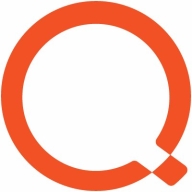

Erwin Data Catalog and IBM InfoSphere Information Governance Catalog are competing tools in the data management category. IBM InfoSphere appears to have superior features, making it a compelling choice despite higher pricing, while Erwin shines in pricing and support.
Features: Erwin Data Catalog emphasizes data discovery, data mapping, and lineage tracking. Its metadata management offerings are robust, making it suitable for organizations focusing on data understanding. IBM InfoSphere is renowned for data governance capabilities. It provides automated policy enforcement, deep integration with enterprise platforms, and a comprehensive governance framework, distinguishing it from Erwin's metadata focus.
Ease of Deployment and Customer Service: Erwin Data Catalog offers faster deployment and responsive customer service. Its model caters to organizations seeking quick implementation. IBM InfoSphere, while powerful, might require more integration time due to its extensive features. However, its comprehensive solution delivers a detailed governance experience.
Pricing and ROI: Erwin Data Catalog provides competitive pricing, often yielding quick ROI due to lower initial costs and efficient deployment. IBM InfoSphere involves higher setup costs, justified by advanced features and long-term benefits. While Erwin is initially cost-effective, IBM InfoSphere offers greater long-term value in meeting comprehensive governance needs.


erwin Data Catalog empowers businesses to efficiently manage their data assets, providing a comprehensive overview and governance capabilities. It supports metadata management, enhancing data discovery and curation processes.
erwin Data Catalog offers robust data management tools that streamline data discovery, lineage, and governance. Designed for sophisticated data environments, it ensures efficient metadata control, providing users with an intuitive way to handle and leverage extensive data assets. Its features cater to enterprises looking to optimize data compliance and transformation strategies.
What are the main features of erwin Data Catalog?erwin Data Catalog is successfully implemented in industries such as finance, healthcare, and retail, enabling these sectors to leverage vast data volumes effectively. It enhances operational efficiency by streamlining data management practices, ensuring compliance, and supporting critical data-driven decision-making processes.
Information governance is a next-gen comprehensive process of administering, enhancing, and collating information to strengthen an organization’s trust and belief that its decision and business processes are the best for the organization’s overall health and continued progress. IBM InfoSphere Information Governance Catalog is an intuitive, progressive web-based tool that empowers users to discover, comprehend, and dissect information. Users are able to design, administer, and collaborate to track data pipelines, execute protocols and procedures, and share common business languages.
Integrate the solution with IBM Watson Knowledge Catalog to increase on-premises Information Governance Catalog efficiency in the cloud and improve the benefit of current gathered data sets. This value-added governance catalog enables users to place gathered metadata where experienced users, analytics, and data communities have seamless protected access to the appropriate resources, based on need, while still maintaining the organization's governance standards.
IBM InfoSphere Information Governance Catalog delivers a secure starting point for organizations to better comprehend and govern their information across the entire network, and continually delivers secure, well-defined, and governed data.
IBM InfoSphere Information Governance Catalog Benefits
We monitor all Metadata Management reviews to prevent fraudulent reviews and keep review quality high. We do not post reviews by company employees or direct competitors. We validate each review for authenticity via cross-reference with LinkedIn, and personal follow-up with the reviewer when necessary.